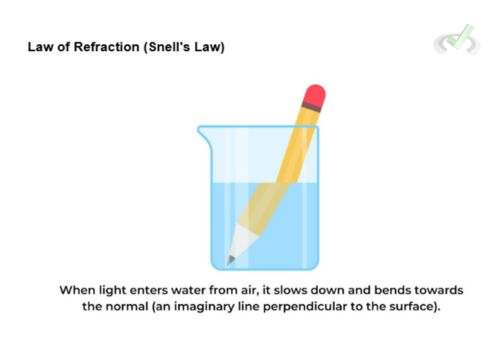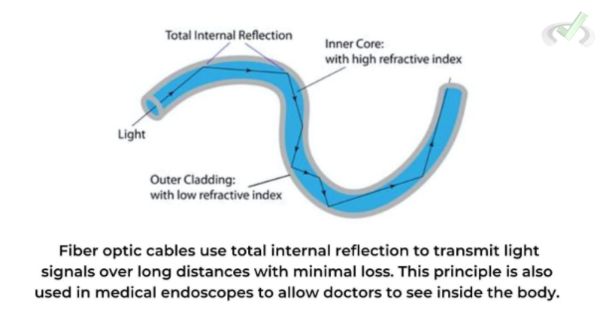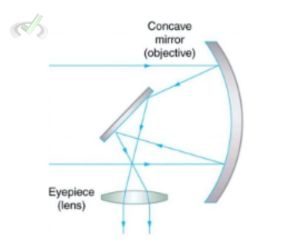Imagine standing in a hall of mirrors at a carnival. You see multiple reflections of yourself, some tall and thin, others short and wide. This experience is not just amusing; it perfectly demonstrates how light interacts with surfaces.
As you move, light reflects off each mirror at different angles, creating various images. Nearby, a friend holds a glass of water, and you notice how the straw appears bent at the water's surface. This bending of light is another intriguing behavior.
These everyday observations showcase the principles of reflection and refraction. They are crucial for understanding optics, which deals with the behavior and properties of light. From designing eyeglasses to creating advanced optical instruments, these principles profoundly impact technology and science.
I. Introduction to Reflection and Refraction
Light exhibits various behaviors when it encounters surfaces and materials. Two of the most crucial behaviors are reflection, where light bounces off surfaces, and refraction, where light bends as it passes through materials. These principles are vital for understanding how lenses, mirrors, and even the human eye work.
II. Properties of Reflection
When light bounces off a surface, it is called reflection. This phenomenon can be easily observed with mirrors and shiny surfaces. Understanding the laws and types of reflection helps us comprehend how light behaves in different environments.
Law of Reflection

The law of reflection states that the angle of incidence (the angle at which incoming light hits a surface) is equal to the angle of reflection (the angle at which light bounces off). This can be observed by shining a flashlight at a mirror and noting how the light reflects. The equation for the law of reflection is:

Types of Reflection
- Specular Reflection: Occurs on smooth surfaces like mirrors or calm water, where light reflects at a single angle.
- Diffuse Reflection: Occurs on rough surfaces like paper or unpolished wood, where light scatters in many directions.
III. Properties of Refraction
Refraction occurs when light bends as it transitions from one substance to another. This bending happens because light travels at different speeds in different materials. Understanding refraction is essential for grasping how lenses and other optical devices work.
Law of Refraction (Snell's Law)

Snell's Law explains how light changes direction as it moves from one substance to another. The law is given by the formula:

Refractive Index
The refractive index of a material tells us how it can alter light direction. A higher refractive index means light bends more.

For example, diamonds have a high refractive index, making them sparkle brilliantly. Different materials have different refractive indices because light travels at different speeds through them. Denser materials generally have higher refractive indices because light slows down more.
IV. Behavior of Light in Different Media
Light behaves differently depending on the medium it travels through. Critical angle and total internal reflection are key concepts that explain these behaviors, especially in practical applications like fiber optics and endoscopy.
Critical Angle and Total Internal Reflection
Light traveling from a denser to a less dense medium has a critical angle. This critical angle determines the maximum angle for total internal reflection.
If the angle of incidence goes beyond the critical angle, all light is reflected. Total internal reflection occurs when light cannot pass through the boundary between the two media.

Dispersion
Dispersion occurs when different light colors bend by different amounts while passing through a material. This is why prisms can split white light into a spectrum of colors, creating a rainbow effect. Dispersion is important in spectroscopy, a technique that identifies materials based on how they disperse light.
V. Applications of Reflection and Refraction
Reflection and refraction have numerous practical applications in our daily lives and various scientific fields. From lenses in eyeglasses to advanced optical instruments, these phenomena play a crucial role.
Lenses and Optical Instruments
Lenses use refraction to focus light. Convex lenses (curved outward) can converge light to a point, making them useful in magnifying glasses and cameras. Concave lenses (curved inward) diverge light and are used in devices like eyeglasses for nearsighted people.

Example: Telescopes use a combination of lenses and mirrors to magnify distant objects. The lens maker's equation helps design these lenses:

VI. Connecting Reflection and Refraction to Broader Scientific Concepts
Reflection and refraction are not just limited to light; they also apply to sound waves and other phenomena. These principles help us understand various natural occurrences and improve technological designs.
Reflection and Sound Waves
Reflection isn't limited to light; sound waves also reflect. This is why we hear echoes. The principles of reflection help in designing auditoriums to enhance sound quality.
Refraction and Temperature Gradients
Refraction also occurs with sound waves, particularly in the atmosphere. Variations in air temperature can bend sound waves, so we sometimes hear sounds from far away more clearly at night. This phenomenon can also explain mirages, where light refracts through layers of air at different temperatures, creating the illusion of water on a hot road.
VII. Wrap-Up and Key Terms
Understanding reflection and refraction involves several key concepts:
Key Terms
- The Angle of Incidence: The angle at which incoming light hits a surface.
- The Angle of Reflection: The angle at which light bounces off a surface.
- Snell's Law: Describes the relationship between angles of incidence and refraction.
- Refractive Index: A measure of how much a material can bend light.
- Total Internal Reflection: Occurs when light reflects entirely within a denser medium.
- Critical Angle: The minimum angle of incidence for total internal reflection to occur.
- Dispersion: The separation of light into colors arranged by wavelength.
VIII. Practice Questions
Sample Practice Question 1
What happens to light when it hits a smooth, shiny surface?
A) It scatters.
B) It bends.
C) It reflects at the same angle.
D) It stops.
Ans. C
When light hits a smooth, shiny surface, it reflects at the same angle at which it hits the surface. This is due to the law of reflection. It states that the angle of incidence equals the angle of reflection.
Sample Practice Question 2
What term describes the bending of light as it passes from one material to another?
A) Reflection
B) Refraction
C) Diffusion
D) Dispersion
Ans. B
Reflection occurs when light reflects off a surface and changes its direction. This bending occurs because light changes speed when it moves between materials with different refractive indices.







 To help you achieve your goal MCAT score, we take turns hosting these
To help you achieve your goal MCAT score, we take turns hosting these 





















 reviews on TrustPilot
reviews on TrustPilot